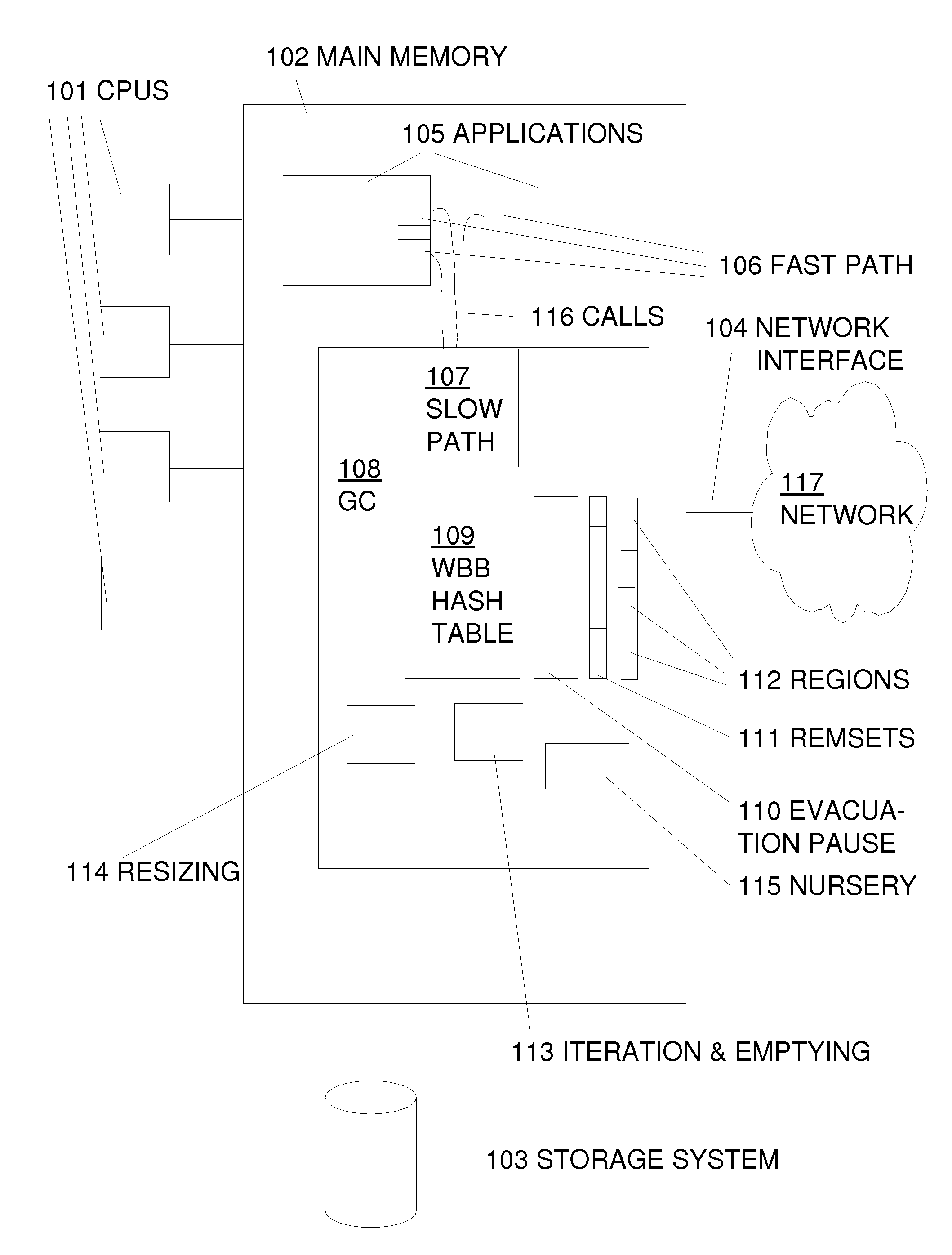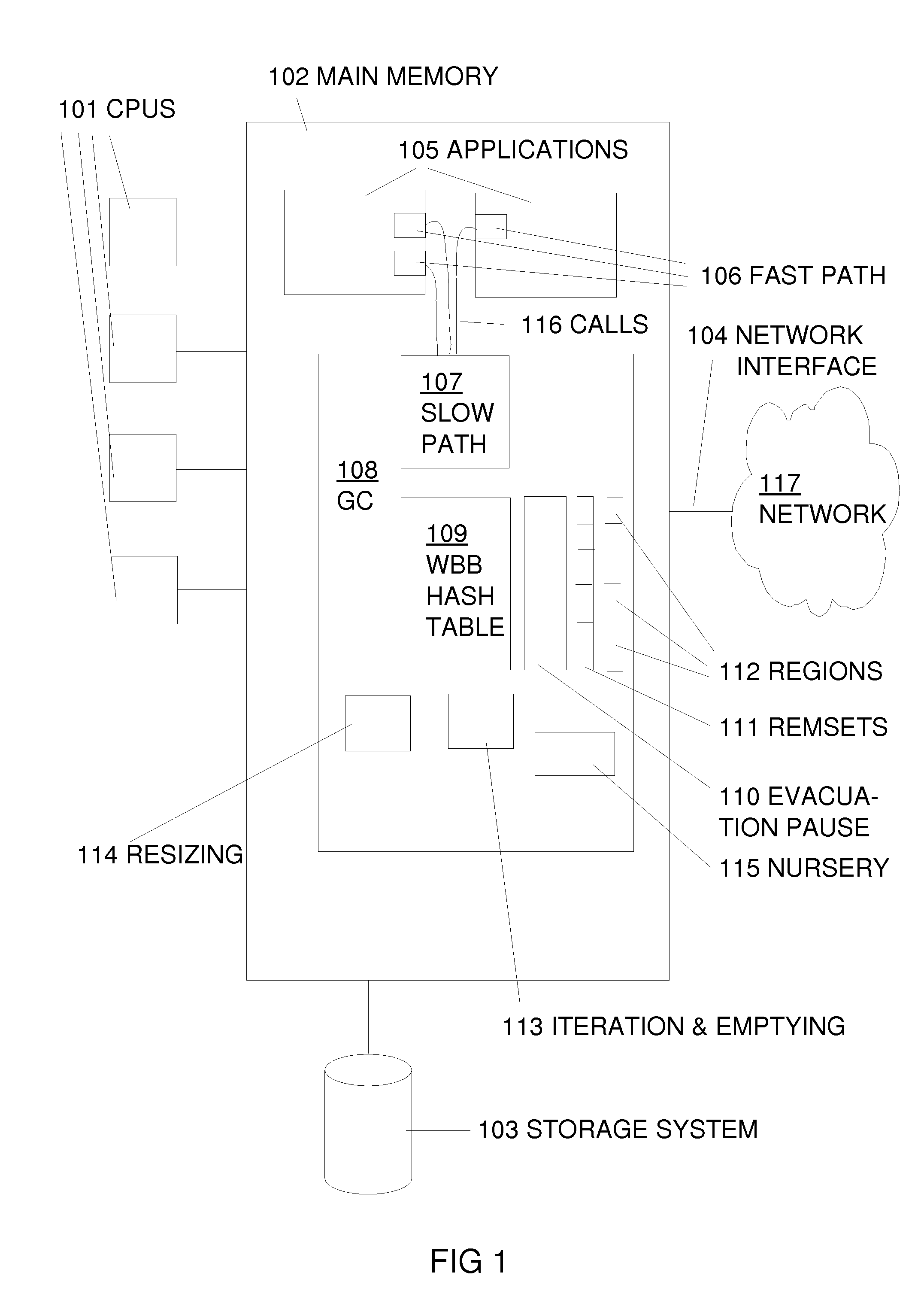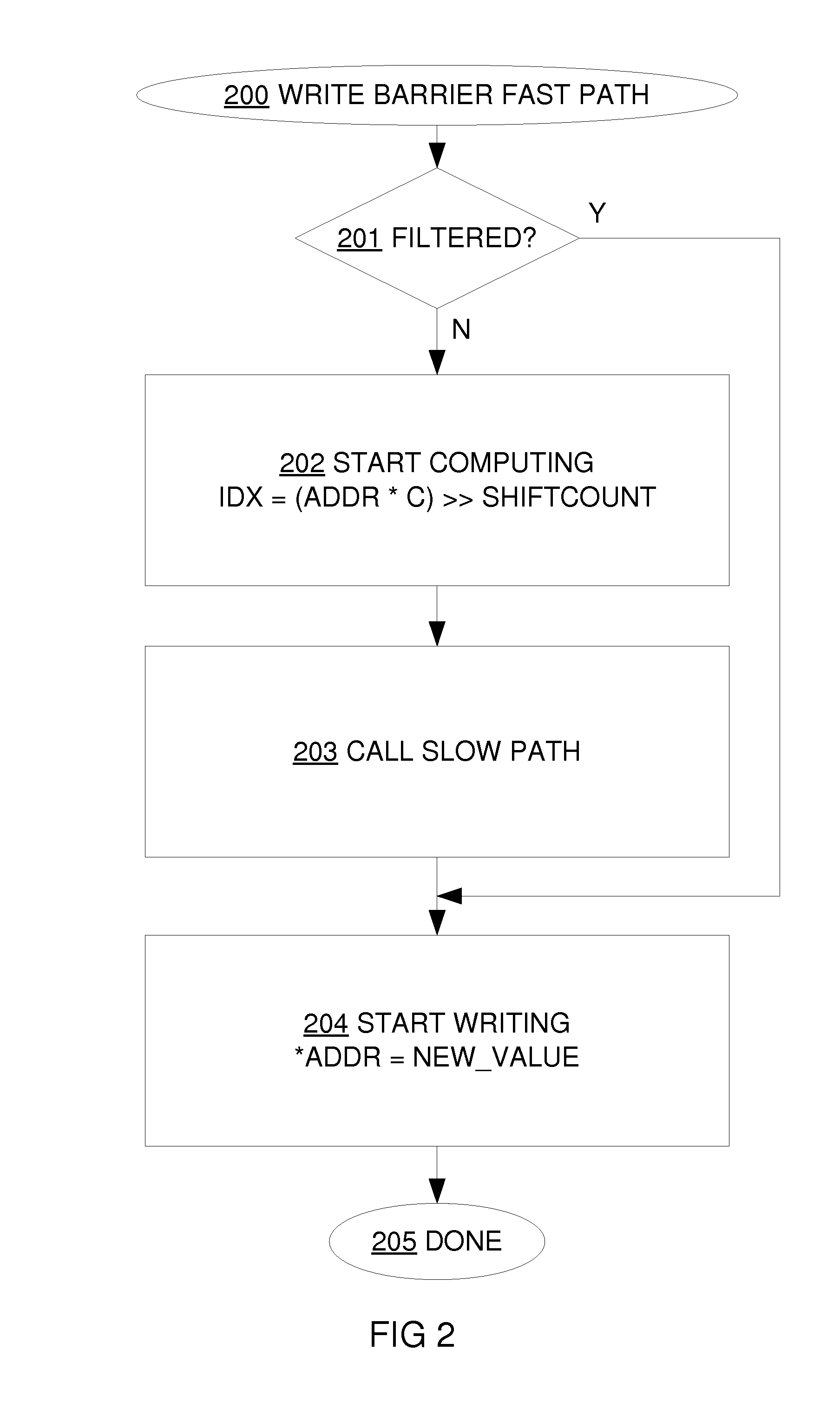Lock-free hash table based write barrier buffer for large memory multiprocessor garbage collectors
a garbage collector and lock-free technology, applied in the field of garbage collection, can solve the problems of reducing cache hit rate, and large memory, so as to reduce write barrier overhead, reduce power consumption, and reduce pause times
- Summary
- Abstract
- Description
- Claims
- Application Information
AI Technical Summary
Benefits of technology
Problems solved by technology
Method used
Image
Examples
Embodiment Construction
[0036]A computing system according to the present invention comprises a garbage collector means for managing memory. Any known or future garbage collection means can be used (many such methods are described in the book by Jones & Lins).
[0037]Known garbage collection methods for general purpose computers that are suitable for systems with large memories requiring incremental collection utilize a write barrier to record certain information about written memory locations. Which writes need to be recorded and what information needs to be recorded about them varies from system to system. However, the write barrier implementation can be considered relatively independent of the particular garbage collection method selected.
[0038]The write barrier is a key interface between the application programs being executed on the computing system and the garbage collector / memory manager component. This structure is illustrated in FIG. 1, which shows a computing system according to the present inventi...
PUM
 Login to View More
Login to View More Abstract
Description
Claims
Application Information
 Login to View More
Login to View More - R&D
- Intellectual Property
- Life Sciences
- Materials
- Tech Scout
- Unparalleled Data Quality
- Higher Quality Content
- 60% Fewer Hallucinations
Browse by: Latest US Patents, China's latest patents, Technical Efficacy Thesaurus, Application Domain, Technology Topic, Popular Technical Reports.
© 2025 PatSnap. All rights reserved.Legal|Privacy policy|Modern Slavery Act Transparency Statement|Sitemap|About US| Contact US: help@patsnap.com



